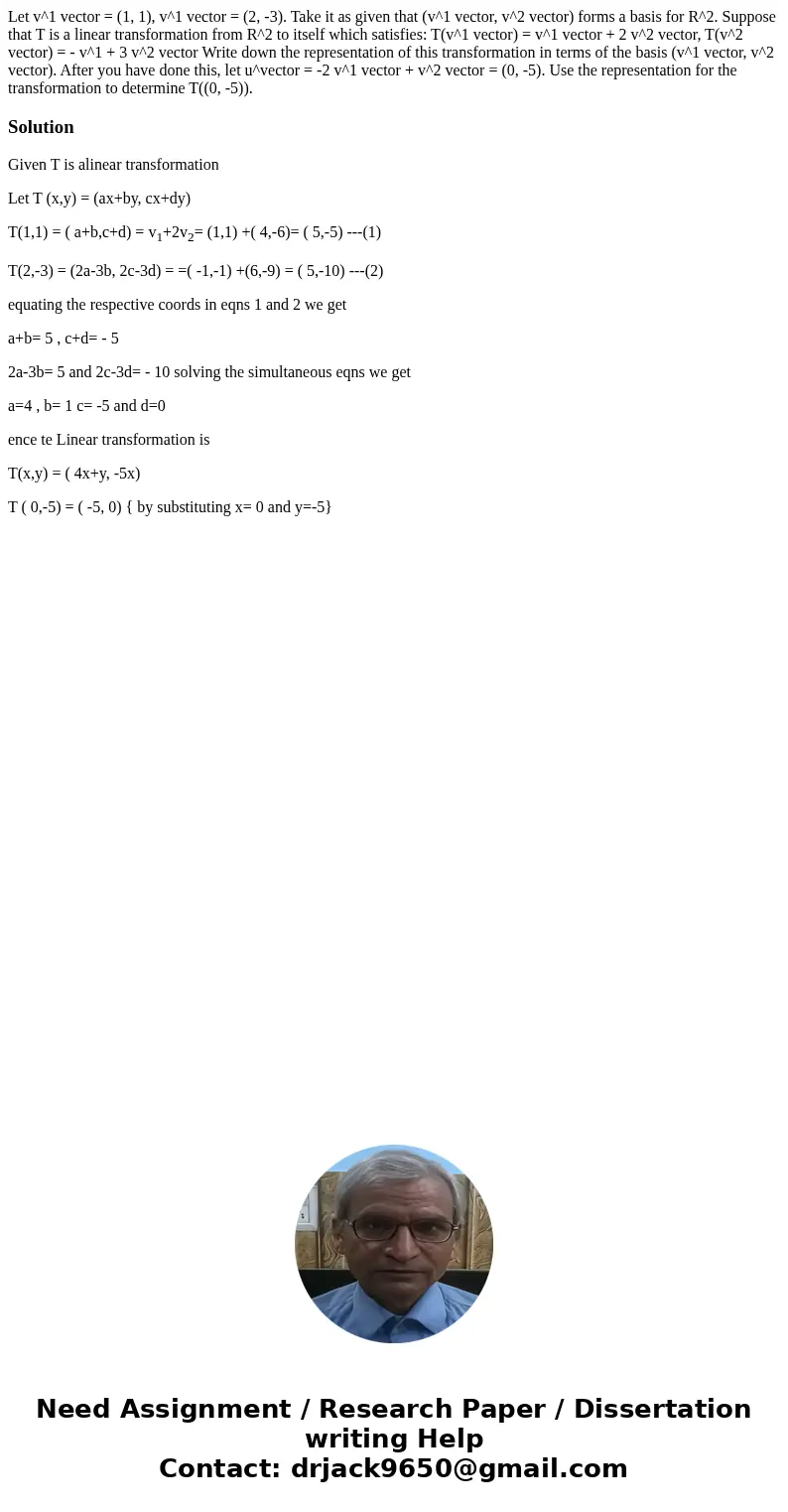Let v1 vector 1 1 v1 vector 2 3 Take it as given that v1 v
Let v^1 vector = (1, 1), v^1 vector = (2, -3). Take it as given that (v^1 vector, v^2 vector) forms a basis for R^2. Suppose that T is a linear transformation from R^2 to itself which satisfies: T(v^1 vector) = v^1 vector + 2 v^2 vector, T(v^2 vector) = - v^1 + 3 v^2 vector Write down the representation of this transformation in terms of the basis (v^1 vector, v^2 vector). After you have done this, let u^vector = -2 v^1 vector + v^2 vector = (0, -5). Use the representation for the transformation to determine T((0, -5)).
Solution
Given T is alinear transformation
Let T (x,y) = (ax+by, cx+dy)
T(1,1) = ( a+b,c+d) = v1+2v2= (1,1) +( 4,-6)= ( 5,-5) ---(1)
T(2,-3) = (2a-3b, 2c-3d) = =( -1,-1) +(6,-9) = ( 5,-10) ---(2)
equating the respective coords in eqns 1 and 2 we get
a+b= 5 , c+d= - 5
2a-3b= 5 and 2c-3d= - 10 solving the simultaneous eqns we get
a=4 , b= 1 c= -5 and d=0
ence te Linear transformation is
T(x,y) = ( 4x+y, -5x)
T ( 0,-5) = ( -5, 0) { by substituting x= 0 and y=-5}

 Homework Sourse
Homework Sourse